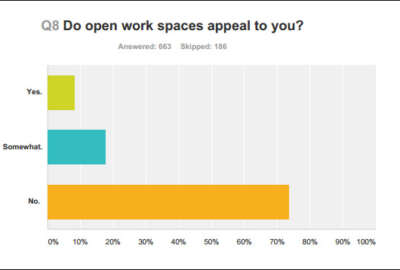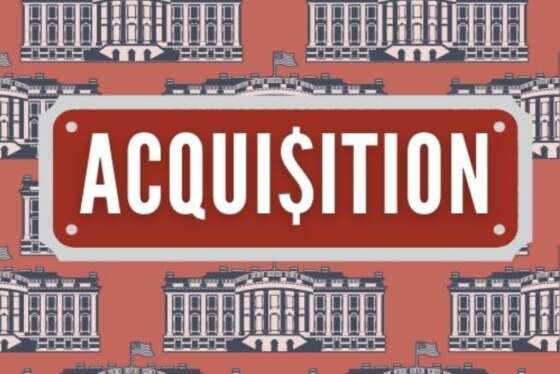
Open spaces, open minds: How LEED standards are changing your office
Eco-friendly construction is a priority, and in some cases a requirement. for future office planning in the federal government. Federal News Radio's special report,...
The green movement graduated from the fringes of society to the forefront long ago. And, in the past several years, it has received more attention from the federal government as well.
“The federal government across the board, whether it be within the Department of Defense, the VA, GSA, even the Department of State — they are looking for more efficient buildings,” said Michael Blount, vice president of Balfour Beatty Construction. Much of that stems from the government’s embrace of Leadership in Energy & Environmental Design (LEED) standards.
LEED is a green building certification program that recognizes environmentally-friendly, best-in-class building strategies and practices. Unveiled by the U.S. Green Building Council (GBC) in 2000, the standards are now the norm, both in the U.S. and abroad.
LEED Certified Federal Offices
“Today, you will not find a solicitation for a construction project that doesn’t have a LEED requirement in it,” said Blount in an interview on the Federal Drive with Tom Temin. The interview is part of Federal News Radio’s special report, The Federal Office of the Future.
LEED standards cover five kinds of construction projects: building design and construction; interior design and construction; building operations and maintenance; neighborhood development; and homes. Within those projects, LEED awards points for green adherence, and further divides that score into four levels of compliance: certified (40-49 points), silver (50-59), gold (60-79) and platinum (80+).
LEED standards cover a wide variety of construction considerations, Blount said.
“It means better indoor air quality, it means better comfort and lighting … it means more daylight, which means larger windows and light that reaches further into the floor space of the building.”
It also means much better energy efficiency for the building itself, including the use of renewable energy if possible. Blount said many Defense projects include a photovoltaic array, which helps cut down the building’s energy use with solar power.
“For the folks who occupy the building, it means a better-controlled building when it comes to heating, ventilation and air conditioning … It also involves [letting] a lot more natural light into the building, which, I think, for many people translates to a better work environment.”
It can also mean the inclusion of bike racks, recharging stations for electric cars, a closer overall proximity to bus and train stations, and more. All of those things, Blount said, are worth points in LEED, and are often amenities employees appreciate.
“That’s one thing LEED has done—change the mindset of the building owner. It’s more than just the building itself, it’s how the people get there.”
Blount also said mindsets are changing when it comes to interior office spaces as well.
“We’re seeing more open layouts, more collaborative spaces,” Blount said. “You don’t need private offices; you don’t need cubicles with six-foot high walls … Maybe you don’t even own a desk; maybe you don’t own an office.”
Open design and LEED standards go hand-in-hand, Blount said. And the movement isn’t just spreading domestically within agencies. The State Department is building LEED-certified offices abroad.
“Right now, the Overseas Building Office is building the London embassy, which is a LEED platinum facility,” Blount said. “It takes into account open spaces and atriums, and works hard to try to account for the person who works in it, and to make their work day a good day.”
While the private sector is charging forward with these ideas, Blount said the government is still ahead—thanks largely to the early efforts of the Defense Department. DoD was a leader in early adoption of LEED standards. Beginning in 2009, it started requiring construction proposals to adhere to a minimum standard of LEED silver.
“That was adopted very fast within DoD across the board,” Blount said. “And, in the end, they had to get a certified building. They had to get the plaque and the certification, and the contractor was responsible for going through and working with the LEED agency through the entire process.”
LEED standards are worth more than a plaque on the door and a pat on the back though, Blount said. Adherence to them can translate directly into savings. The LEED process and design are generally more expensive, but the actual construction costs are “even or less” due to the increased efficiency of the design.
One issue that comes up is life-cycle cost analysis, or total operating costs, Blount said.
“Sometimes, you may have to pay a higher first cost to get a better quality … apparatus, that, in the long term, will yield great savings when it comes to energy or sustainability.”
Blount admits there can also be some design challenges when adhering to LEED standards.
“It’s a design balance,” Blount said. “You can have requirements that are conflicting.”
Often, Blount said, making a building more open and letting in more natural light can make accomplishing other mandates, such as proper insulation, more difficult.
But many designers have already figured out ways around these challenges, Blount said. Designers now use different kinds of glass that are better insulted and some also add state-of-the-art roofing insulation to seal the building as tightly as possible.
“There is a conflict between [LEED standards] and the conditioning of the building, but a lot of the designers out there are using some of the state-of-the-art materials. They’re very smart,” Blount said. “They’ve done a great job of balancing the two.”
And with the GBC releasing version four of its LEED standards in November of 2013, Blount said he doesn’t see a shift away from eco-friendly construction anytime soon.
“The mindset has changed. Folks are thinking as they’re putting together requirements for a building. They always have in the backs of their minds energy and environment. How can we make this a green building? How can we make it more sustainable?”
Copyright © 2025 Federal News Network. All rights reserved. This website is not intended for users located within the European Economic Area.




